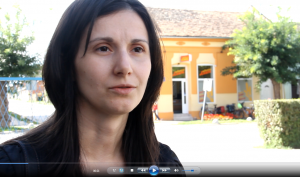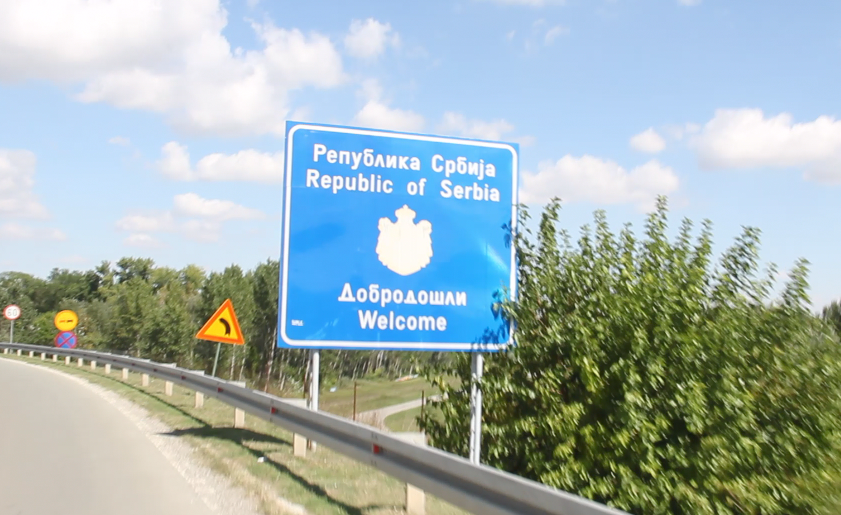 Since the 2011 census in Vukovar, it was recorded that the population of Serbians in the Croatian town had exceeded one third, which was the ‘legal’ requirement to have bilingual signs in both the Latin (Croatian), and Cyrillic (Serbian) alphabets in the town, despite the language spoken being very similar.
Since the 2011 census in Vukovar, it was recorded that the population of Serbians in the Croatian town had exceeded one third, which was the ‘legal’ requirement to have bilingual signs in both the Latin (Croatian), and Cyrillic (Serbian) alphabets in the town, despite the language spoken being very similar.At the Croatian border town of Llock, some of us interviewed a local Croatian woman, who passionately expressed her wish for peace on both sides.
We also spoke to a Serbian woman, who had previously  lived in Vukovar, and now lives across the border on the Serbian side, but works and has a partner in Croatia, meaning that she crosses the border twice every day, and had to renew her passport yearly due to so many stamps before the recent introduction of ID cards. She explained in length the situation for Serbian people living in Croatia who find it very difficult to find work and ID papers there due to discrimination, but also her view of the events in Vukovar, which in her view were masking the real issues and racism that Serbs face today.
lived in Vukovar, and now lives across the border on the Serbian side, but works and has a partner in Croatia, meaning that she crosses the border twice every day, and had to renew her passport yearly due to so many stamps before the recent introduction of ID cards. She explained in length the situation for Serbian people living in Croatia who find it very difficult to find work and ID papers there due to discrimination, but also her view of the events in Vukovar, which in her view were masking the real issues and racism that Serbs face today.
Once in Serbia we headed north to rejoin the Danube, and found this free camping spot, with a bar, just 40 km from the following day’s ride to Novi Sad. This is the view from the tent in the morning.







